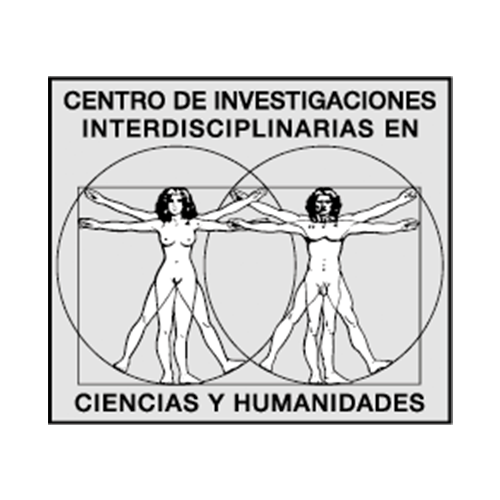Evaluating the toxicity of nanomaterials in three-dimensional cellular models
Main Article Content
Abstract
Traditionally, in vitro evaluations to determine the cytotoxic effect of nanomaterials in cell cultures have been carried out in two-dimensional cultures, because the protocols to assess it have been adapted from those used in toxicology. However, the interactions between cells are much more complex than those found in a monolayer arrangement. Thus, this is the main reason to promote the implementation of three-dimensional cell cultures also known as spheroids, to assess the effect of nanomaterials on cell cultures. Abundant supports the idea that spheroids represent a better model for the study of cellular responses, since they emulate more precisely the cellular junctions, communication and physiology that occurs in a tissue within an in vivo model. Herein, we discuss some points about the development of 3D cultures as a new and better methodology for nanotoxicological evaluations.
Downloads
Article Details

Mundo Nano. Revista Interdisciplinaria en Nanociencias y Nanotecnología por Universidad Nacional Autónoma de México se distribuye bajo una Licencia Creative Commons Atribución-NoComercial 4.0 Internacional.
Basada en una obra en http://www.mundonano.unam.mx.
References
Antoni, D., Burckel, H., Josset, E., Noel, G., Antoni, D., Burckel, H., Noel, G. (2015). Three-dimensional cell culture: A breakthrough in vivo. International Journal of Molecular Sciences, 16(12): 5517–5527. https://doi.org/10.3390/ijms16035517 DOI: https://doi.org/10.3390/ijms16035517
Belli, V., Guarnieri, D., Biondi, M., della Sala, F. y Netti, P. A. (2017). Dynamics of nanoparticle diffusion and uptake in three-dimensional cell cultures. Colloids and Surfaces B: Biointerfaces, 149: 7-15. https://doi.org/10.1016/j.colsurfb.2016.09.046 DOI: https://doi.org/10.1016/j.colsurfb.2016.09.046
Chia, S. L., Tay, C. Y., Setyawati, M. I. y Leong, D. T. (2015). Biomimicry 3D gastrointestinal spheroid platform for the assessment of toxicity and inflammatory effects of zinc oxide nanoparticles. Small, 11(6): 702-712. https://doi.org/10.1002/smll.201401915 DOI: https://doi.org/10.1002/smll.201401915
Djordjevic, B. y Lange, C. S. (1990). Clonogenicity of mammalian cells in hybrid spheroids: a new assay method. Radiation and Environmental Biophysics, 29(1): 31-46. http://www.ncbi.nlm.nih.gov/pubmed/2305028 DOI: https://doi.org/10.1007/BF01211233
Fey, S. J. y Wrzesinski, K. (2012). Determination of drug toxicity using 3D spheroids constructed from an immortal human hepatocyte cell line. Toxicological Sciences, 127(2): 403-411. https://doi.org/10.1093/toxsci/kfs122 DOI: https://doi.org/10.1093/toxsci/kfs122
Gagner, J. E., Shrivastava, S., Qian, X., Dordick, J. S. y Siegel, R. W. (2012). Engineering nanomaterials for biomedical applications requires understanding the nano-bio interface: A perspective. Journal of Physical Chemistry Letters, 3(21): 3149-3158. https://doi.org/10.1021/jz301253s DOI: https://doi.org/10.1021/jz301253s
Griffith, L. G. y Swartz, M. A. (2006). Capturing complex 3D tissue physiology in vitro. Nature Reviews Molecular Cell Biology, 7(3): 211-224. https://doi.org/10.1038/nrm1858 DOI: https://doi.org/10.1038/nrm1858
Huang, B. W. y Gao, J. Q. (2018,). Application of 3D cultured multicellular spheroid tumor models in tumor-targeted drug delivery system research. Journal of Controlled Release, enero 28; 270: 246-259. Elsevier B.V. https://doi.org/10.1016/j.jconrel.2017.12.005 DOI: https://doi.org/10.1016/j.jconrel.2017.12.005
Huang, K., Ma, H., Liu, J., Huo, S., Kumar, A., Wei, T., … Liang, X.-J. (2012). Size-dependent localization and penetration of ultrasmall gold nanoparticles in cancer cells, multicellular spheroids, and tumors in vivo. ACS Nano, 6(5): 4483-4493. https://doi.org/10.1021/nn301282m DOI: https://doi.org/10.1021/nn301282m
Hussain, S. M., Warheit, D. B., Ng, S. P., Comfort, K. K., Grabinski, C. M. y Braydich-Stolle, L. K. (2015). At the crossroads of nanotoxicology in vitro: Past achievements and current challenges. Toxicological Sciences, 25, septiembre. Oxford University Press. https://doi.org/10.1093/toxsci/kfv106 DOI: https://doi.org/10.1093/toxsci/kfv106
Jarockyte, G., Dapkute, D., Karabanovas, V., Daugmaudis, J. V., Ivanauskas, F. y Rotomskis, R. (2018). 3D cellular spheroids as tools for understanding carboxylated quantum dot behavior in tumors. Biochimica et Biophysica Acta - General Subjects, 1862(4): 914-923. https://doi.org/10.1016/j.bbagen.2017.12.014 DOI: https://doi.org/10.1016/j.bbagen.2017.12.014
Kapałczyńska, M., Kolenda, T., Przybyła, W., Zajączkowska, M., Teresiak, A., Filas, V., … Lamperska, K. (2018). 2D and 3D cell cultures – a comparison of different types of cancer cell cultures. Archives of Medical Science, 14(4): 910-919. https://doi.org/10.5114/aoms.2016.63743 DOI: https://doi.org/10.5114/aoms.2016.63743
Katifelis, H., Lyberopoulou, A., Mukha, I., Vityuk, N., Grodzyuk, G., Theodoropoulos, G. E., … Gazouli, M. (2018). Ag/Au bimetallic nanoparticles induce apoptosis in human cancer cell lines via P53, CASPASE-3 and BAX/BCL-2 pathways. Artificial Cells, Nanomedicine and Biotechnology, 46(sup3), S389-S398. https://doi.org/10.1080/21691401.2018.1495645 DOI: https://doi.org/10.1080/21691401.2018.1495645
Laschke, M. W. y Menger, M. D. (2016). Life is 3D: Boosting spheroid function for tissue engineering. Trends in Biotechnology, 35(2): 133-144. https://doi.org/10.1016/J.TIBTECH.2016.08.004 DOI: https://doi.org/10.1016/j.tibtech.2016.08.004
Laurent, S., Burtea, C., Thirifays, C., Häfeli, U. O. y Mahmoudi, M. (2012). Crucial ignored parameters on nanotoxicology: The importance of toxicity assay modifications and “cell vision.” PLoS ONE, 7(1): e29997. https://doi.org/10.1371/journal.pone.0029997 DOI: https://doi.org/10.1371/journal.pone.0029997
Lu, H. y Stenzel, M. H. (2018). Multicellular tumor spheroids (MCTS) as a 3D in vitro evaluation tool of nanoparticles. Small, 14(13): 1702858. https://doi.org/10.1002/smll.201702858 DOI: https://doi.org/10.1002/smll.201702858
Matsumoto, K., Saitoh, H., Doan, T. L. H., Shiro, A., Nakai, K., Komatsu, A., … Tamanoi, F. (2019). Destruction of tumor mass by gadolinium-loaded nanoparticles irradiated with monochromatic X-rays: Implications for the Auger therapy. Scientific Reports, 9(1). https://doi.org/10.1038/s41598-019-49978-1 DOI: https://doi.org/10.1038/s41598-019-49978-1
McElwain, D. L. S. y Pettet, G. J. (1993). Cell migration in multicell spheroids: Swimming against the tide. Bulletin of Mathematical Biology, 55(3): 655-674. https://doi.org/10.1007/BF02460655 DOI: https://doi.org/10.1016/S0092-8240(05)80244-7
Messner, S., Agarkova, I., Moritz, W. y Kelm, J. M. (2013). Multi-cell type human liver microtissues for hepatotoxicity testing. Archives of Toxicology, 87(1): 209-213. https://doi.org/10.1007/s00204-012-0968-2 DOI: https://doi.org/10.1007/s00204-012-0968-2
Mikhail, A. S., Eetezadi, S. y Allen, C. (2013). Multicellular tumor spheroids for evaluation of cytotoxicity and tumor growth inhibitory effects of nanomedicines in vitro: a comparison of docetaxel-loaded block copolymer micelles and Taxotere®. PloS One, 8(4): e62630. https://doi.org/10.1371/journal.pone.0062630 DOI: https://doi.org/10.1371/journal.pone.0062630
Nederman, T., Norling, B., Glimelius, B., Carlsson, J. y Brunk, U. (1984). Demonstration of an extracellular matrix in multicellular tumor spheroids. Cancer Research, 44(7): 3090-3097. http://www.ncbi.nlm.nih.gov/pubmed/6373002
Pampaloni, F. y Stelzer, E. (2010). Three-dimensional cell cultures in toxicology. Biotechnology & Genetic Engineering Reviews, 26: 117-138. http://www.ncbi.nlm.nih.gov/pubmed/21415878 DOI: https://doi.org/10.5661/bger-26-117
Pavlovich, E., Volkova, N., Yakymchuk, E., Perepelitsyna, O., Sydorenko, M. y Goltsev, A. (2017). In vitro study of influence of Au nanoparticles on HT29 and SPEV cell lines. Nanoscale Research Letters, 12. https://doi.org/10.1186/s11671-017-2264-9 DOI: https://doi.org/10.1186/s11671-017-2264-9
Pellen-Mussi, P., Tricot-Doleux, S., Neaime, C., Nerambourg, N., Cabello-Hurtado, F., Cordier, S., … Jeanne, S. (2018). Evaluation of functional SiO2 nanoparticles toxicity by a 3D culture model. Journal of Nanoscience and Nanotechnology, 18(5): 3148-3157. https://doi.org/10.1166/jnn.2018.14619 DOI: https://doi.org/10.1166/jnn.2018.14619
Sambale, F., Lavrentieva, A., Stahl, F., Blume, C., Stiesch, M., Kasper, C., … Scheper, T. (2015). Three dimensional spheroid cell culture for nanoparticle safety testing. Journal of Biotechnology, 205, 120–129. https://doi.org/10.1016/j.jbiotec.2015.01.001 DOI: https://doi.org/10.1016/j.jbiotec.2015.01.001
Sivaraman, A., Leach, J. K., Townsend, S., Iida, T., Hogan, B. J., Stolz, D. B., … Griffith, L. G. (2005). A microscale in vitro physiological model of the liver: predictive screens for drug metabolism and enzyme induction. Current Drug Metabolism, 6(6): 569-591. http://www.ncbi.nlm.nih.gov/pubmed/16379670 DOI: https://doi.org/10.2174/138920005774832632
Souza, W., Piperni, S. G., Laviola, P., Rossi, A. L., Rossi, M. I. D., Archanjo, B. S., … Ribeiro, A. R. (2019). The two faces of titanium dioxide nanoparticles bio-camouflage in 3D bone spheroids. Scientific Reports, 9(1): 9309. https://doi.org/10.1038/s41598-019-45797-6 DOI: https://doi.org/10.1038/s41598-019-45797-6
Sutherland, R. M., McCredie, J. A. e Inch, W. R. (1971). Growth of multicell spheroids in tissue culture as a model of nodular carcinomas. Journal of the National Cancer Institute, 46(1): 113-120. http://www.ncbi.nlm.nih.gov/pubmed/5101993
Tan, Y., Richards, D., Xu, R., Stewart-Clark, S., Mani, S. K., Borg, T. K., … Mei, Y. (2015). Silicon nanowire-induced maturation of cardiomyocytes derived from human induced pluripotent stem cells. Nano Letters, 15(5): 2765-2772. https://doi.org/10.1021/nl502227a DOI: https://doi.org/10.1021/nl502227a
Tchoryk, A., Taresco, V., Argent, R. H., Ashford, M., Gellert, P. R., Stolnik, S., … Garnett, M. C. (2019). Penetration and uptake of nanoparticles in 3D tumor spheroids. Bioconjugate Chemistry, 30(5): 1371-1384. https://doi.org/10.1021/acs.bioconjchem.9b00136 DOI: https://doi.org/10.1021/acs.bioconjchem.9b00136
Verjans, E.-T., Doijen, J., Luyten, W., Landuyt, B. y Schoofs, L. (2018). Three-dimensional cell culture models for anticancer drug screening: Worth the effort? Journal of Cellular Physiology, 233(4): 2993-3003. https://doi.org/10.1002/jcp.26052 DOI: https://doi.org/10.1002/jcp.26052
Vinci, M., Box, C. y Eccles, S. A. (2015). Three-dimensional (3D) tumor spheroid invasion assay. Journal of Visualized Experiments, 2015(99). https://doi.org/10.3791/52686
Weigelt, B., Ghajar, C. M. y Bissell, M. J. (2014 ). The need for complex 3D culture models to unravel novel pathways and identify accurate biomarkers in breast cancer. Advanced Drug Delivery Reviews, abril. https://doi.org/10.1016/j.addr.2014.01.001 DOI: https://doi.org/10.1016/j.addr.2014.01.001
Weiswald, L.-B., Bellet, D. y Dangles-Marie, V. (2015). Spherical cancer models in tumor biology. Neoplasia, 17(1): 1-15. https://doi.org/10.1016/J.NEO.2014.12.004 DOI: https://doi.org/10.1016/j.neo.2014.12.004
Xia, X., Monteiro-riviere, N. A. y Riviere, J. E. (2010). An index for characterization of nanomaterials in biological systems. Nature Nanotechnology, 5(agosto): 671-675. https://doi.org/10.1038/nnano.2010.164 DOI: https://doi.org/10.1038/nnano.2010.164
Yamaguchi, S., Kobayashi, H., Narita, T., Kanehira, K., Sonezaki, S., Kubota, Y., … Iwasaki, Y. (2010). Novel photodynamic therapy using water-dispersed TiO2-polyethylene glycol compound: evaluation of antitumor effect on glioma cells and spheroids in vitro. Photochemistry and Photobiology, 86(4): 964-971. https://doi.org/10.1111/j.1751-1097.2010.00742.x DOI: https://doi.org/10.1111/j.1751-1097.2010.00742.x
Yang, C.-C., Tseng, P.-H., Low, M. C., Hua, W.-H., Yu, J.-H., He, Y., … Kiang, Y.-W. (2018). Evaluations of cell uptake capabilities of gold nanoparticle and photosensitizer in a cell spheroid, (Conferencia de presentación). En X.-J. Liang, W. J. Parak y M. Osiński (eds.), Colloidal nanoparticles for biomedical applications XIII (vol. 10507: 27). SPIE. https://doi.org/10.1117/12.2287592 DOI: https://doi.org/10.1117/12.2287592
Zhdanov, V. P. (2019). Formation of a protein corona around nanoparticles. Current Opinion in Colloid and Interface Science, junio 1. Elsevier Ltd. https://doi.org/10.1016/j.cocis.2018.12.002 DOI: https://doi.org/10.1016/j.cocis.2018.12.002





